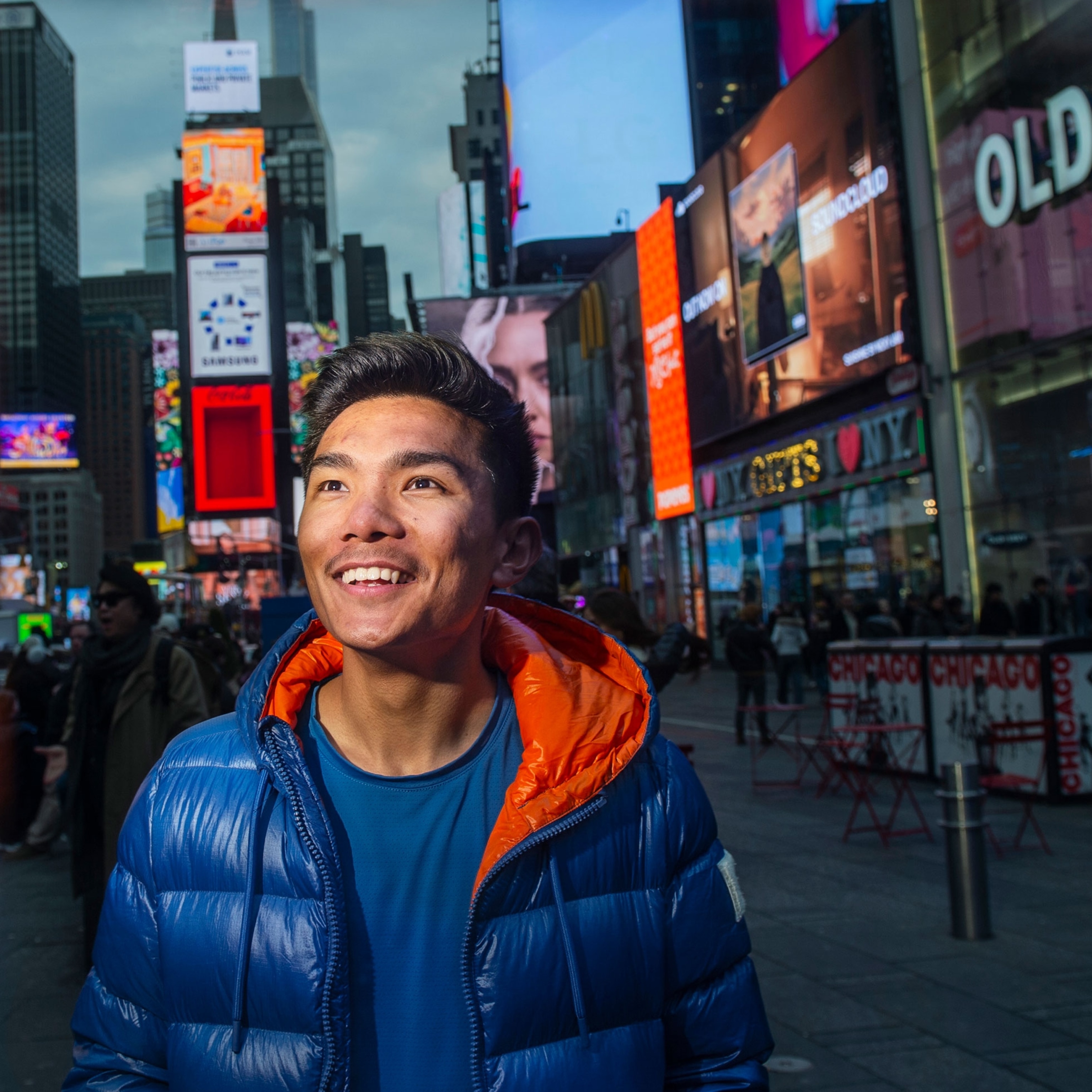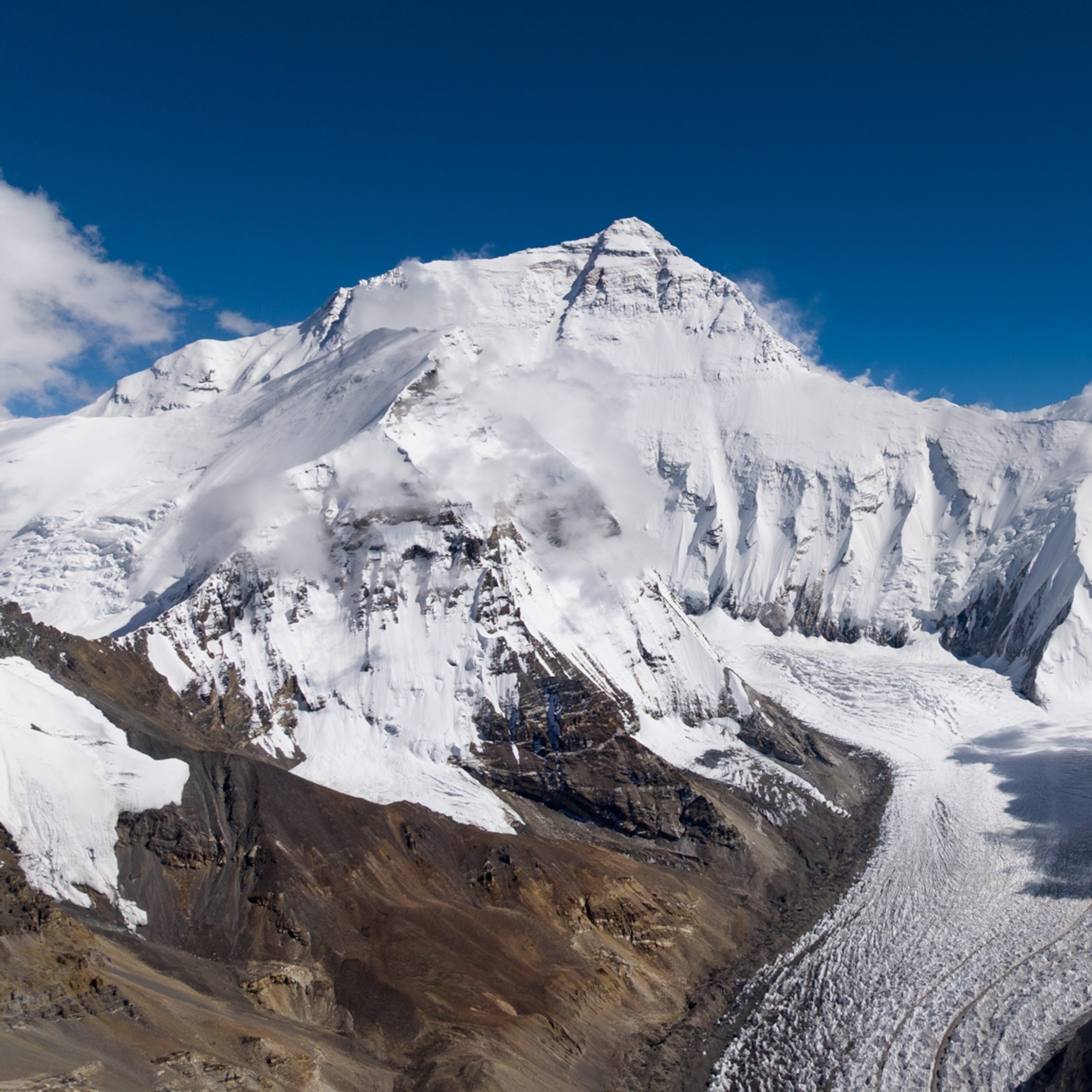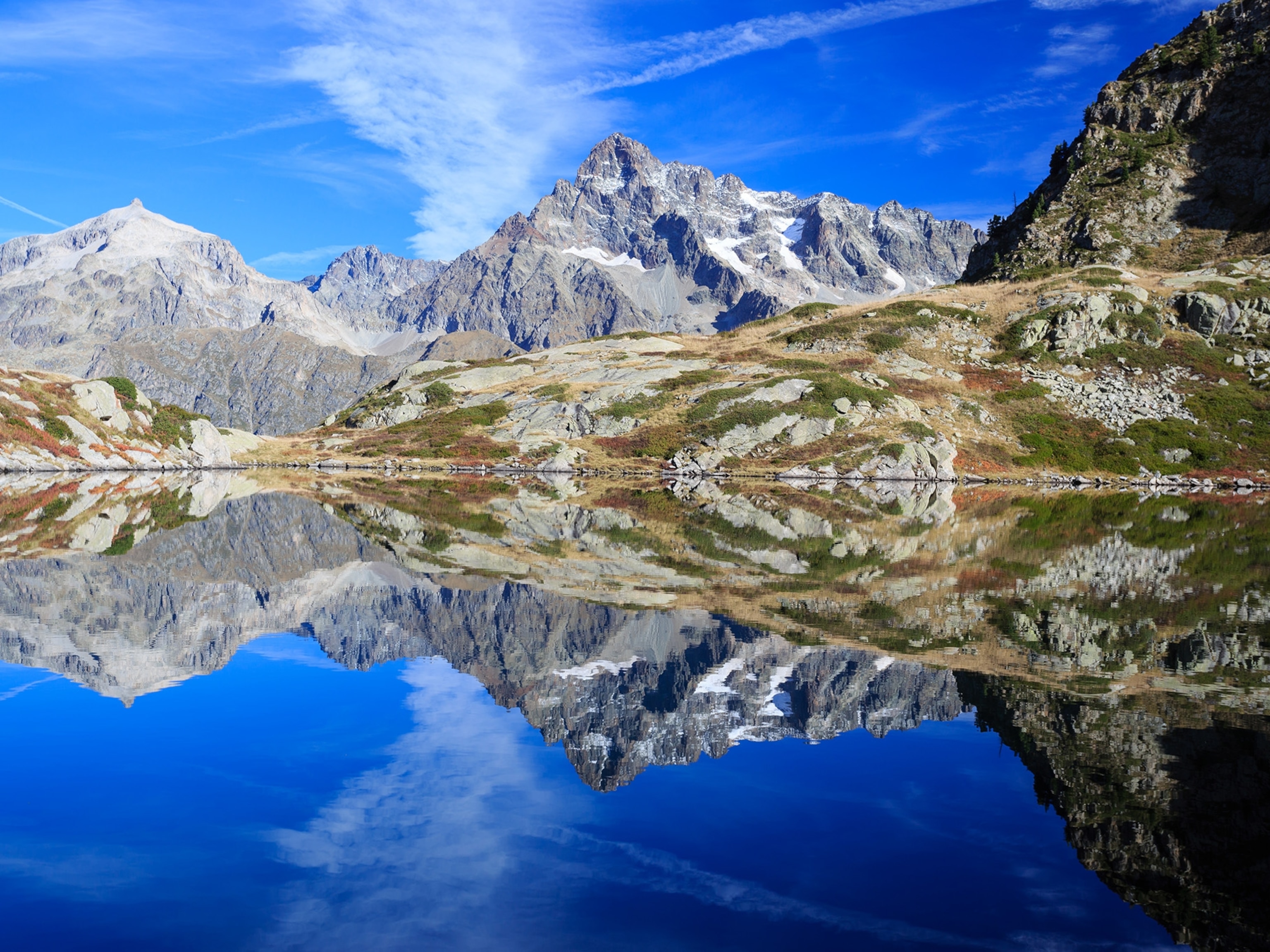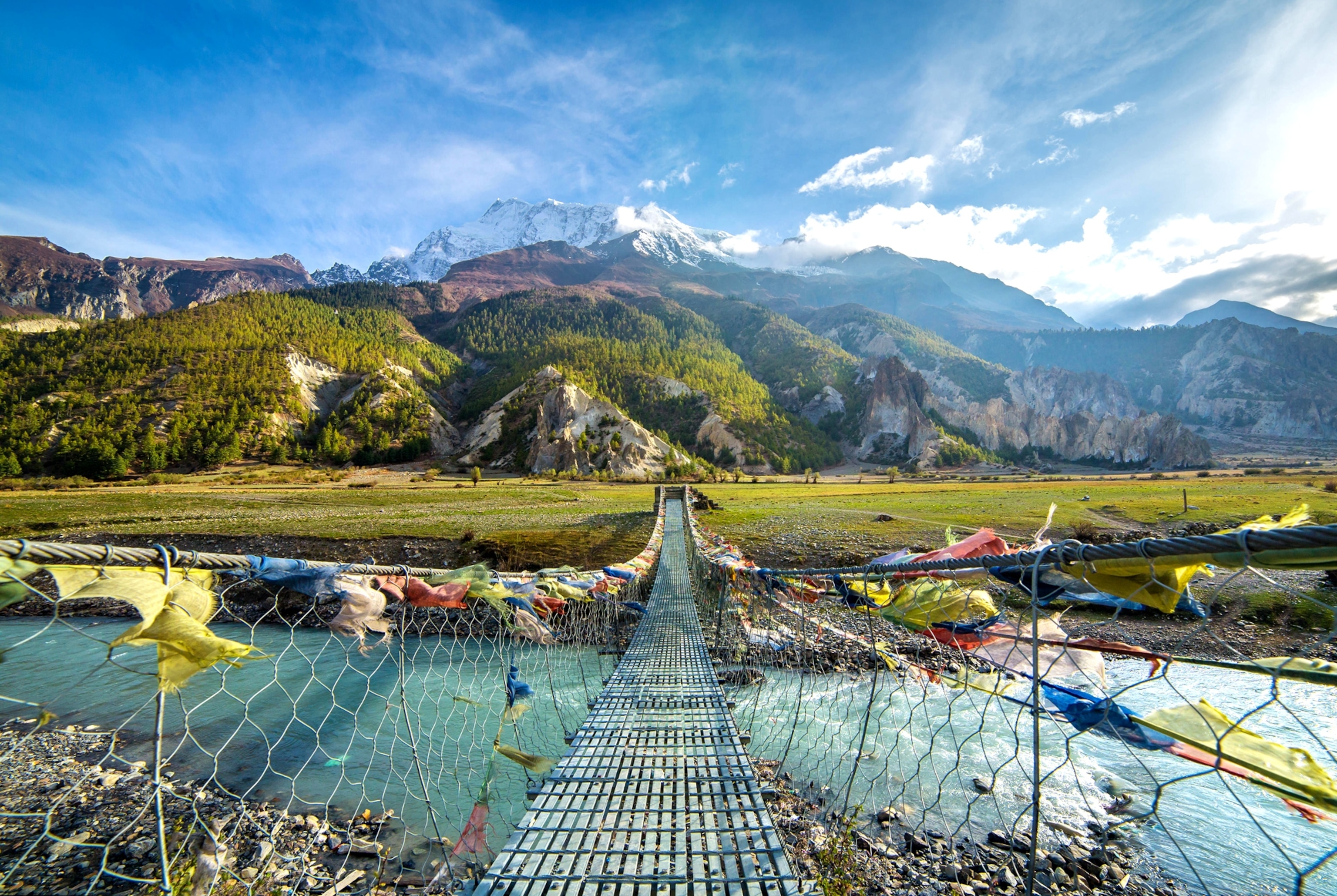
In remote Nepal, new roads bring opportunity—and conflict
Asphalt paves the intersection of ecotourism and development at a famed Himalayan trekking hub.
In north-central Nepal, the remote district of Mustang has become a renowned Himalayan trekking destination for those seeking to hike through a place that in some ways has remained unchanged for centuries. Soaring, snowy peaks loom over landscapes riven by rocky clefts. Vibrant Buddhist prayer flags top summits, and burgundy-hued monasteries hug steep hillsides in this region bordering Tibet.
But change is coming quickly to Mustang, as it is throughout Nepal. The country has embarked on a fast-paced road-building program that’s transforming the landscape as well as the lives of residents and the experiences of travelers. While some visitors bemoan the expansion of roads into what they view as pristine regions, many Nepalis living in remote settlements welcome easier access to cities and opportunities to enhance their economic prospects.
Tsewang Bista, founder of Mustang Adventure Trek, noted that tourism began in Mustang in 1992, when Nepal opened the historic kingdom to visitors. “Mustang was a totally different place, completely isolated, out of touch with the outside world,” he said, “a place unknown even to people from Kathmandu.” Tourism gave people a source of income, not just trek leaders and Sherpas, but cooks, teahouse operators, and shopkeepers. Foreigners unconsciously encouraged locals to revive age-old traditions, said Bista, a descendant of the royal family. “People who came to Mustang were interested in our religion. So we felt, these are the things that need to be kept intact.”
But what is being kept intact—and what is changing—is at the center of a conversation over how this region will be developed to benefit both locals and travelers.
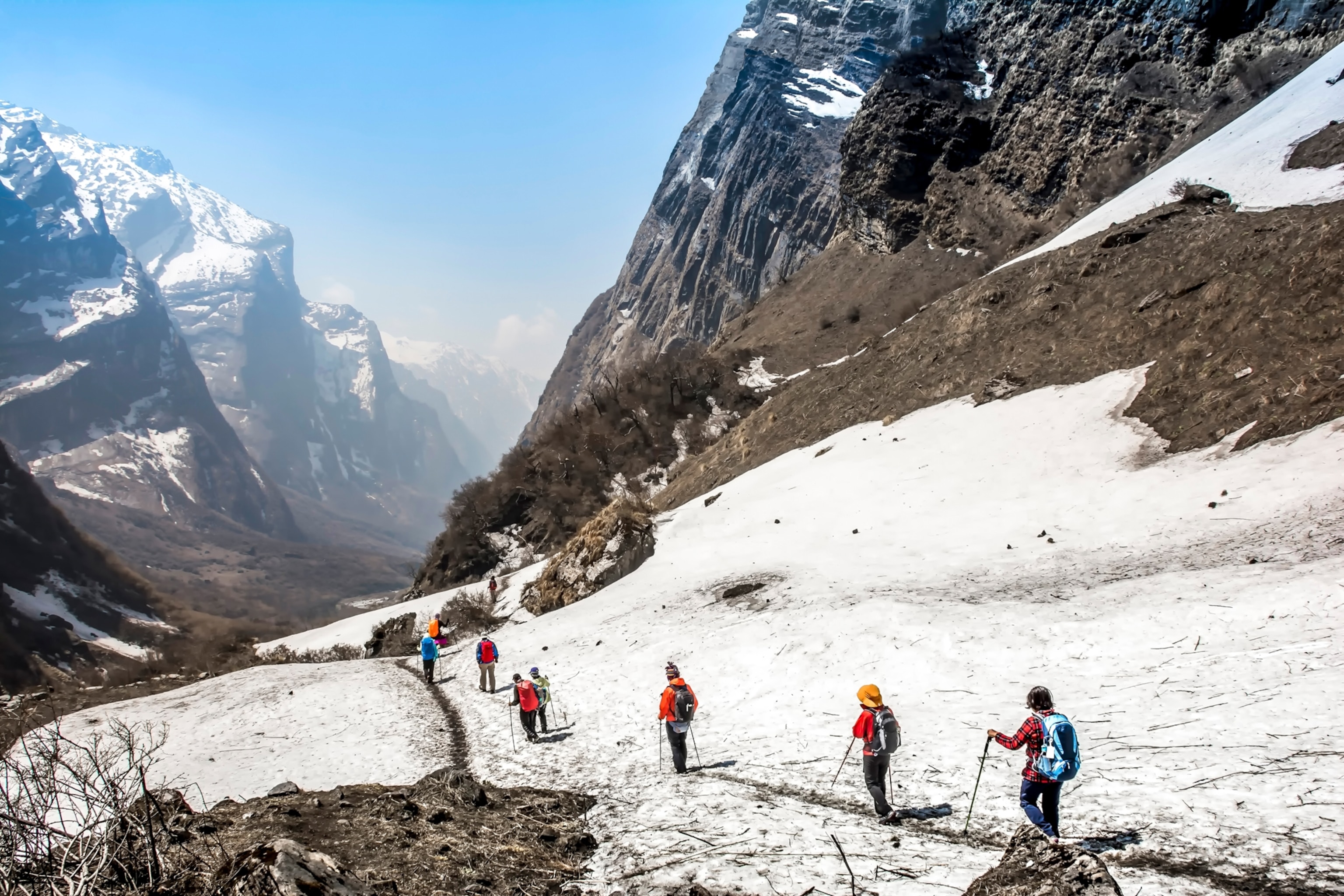
Views from a trek
What I noticed the most while trekking through Mustang were the sounds: horses’ bells, the wind scouring the rocky terrain, the rush of water in the creeks. But six days into the trek, we heard a sound that overwhelmed all others: the insistent growl of a bulldozer scooping land from a hillside for a road linking Mustang to China. “Let’s get out of here,” said our trekking leader, Jamling Tenzing Norgay.
“Local people have the right to improve, the right to do better in life,” Norgay said later. “Who are we to stop people from having their own vehicle at their doorstep? We have it; they want that.” Yet he is keenly aware of what’s disappearing, for locals and visitors: “The moment you have cars going by, the whole charm of a trek is lost,” said Norgay. That’s significant for the thousands of Nepalis who depend on tourism for their livelihood.
(Related: Experience being a climber on the world’s tallest mountain.)
My wife and I joined Tenzing Norgay Adventures for an autumn trek, before the COVID-19 pandemic, because we wanted to hear Jamling Norgay’s tales of his father’s mountaineering career and about Jamling following his father’s footsteps to the summit of Everest. In 1953, Tenzing Norgay was the first person, along with Edmund Hillary, to reach the summit of Earth’s highest mountain. They never said who first touched the top of the world.
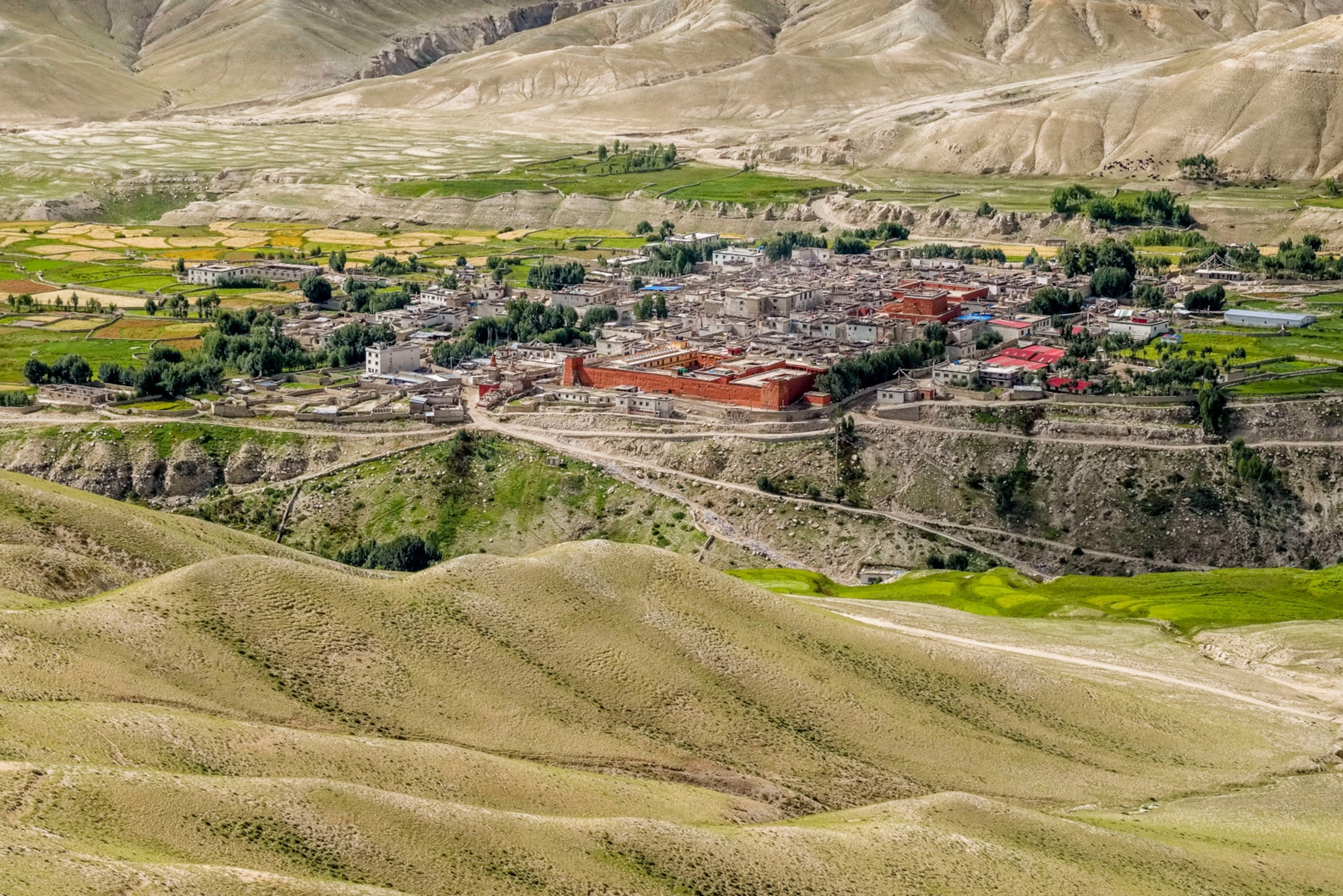
Our trek through Mustang was everything we hoped it would be: exhilarating walks up peaks above 14,000 feet, camaraderie with Sherpa guides, visits to centuries-old monasteries, a chance to commune with local people at teahouses. It was also a window into how rapidly Nepal’s rural areas are changing, as bulldozers carve roads into areas that for many centuries have been traversed on foot.
Known as the Forbidden Kingdom, Mustang is becoming a bit less forbidden and can feel more like Tibet than Tibet itself. The local people, in contrast to Chinese-controlled Tibet, are allowed to openly practice Buddhism, honor the Dalai Lama, and freely fly their colorful prayer flags. As we hiked, villagers called out “tashi delek,” a Tibetan phrase which means, “May you be happy here and now.”
Midway through the trek, our group of eight reached Lo Manthang, arriving in the medieval settlement the way people had for centuries: on foot and carrying a load. Yaks traverse narrow alleyways of the walled city that was once a hub for the salt trade; less than a mile away, a new hotel outside the ancient kingdom’s walls has Wi-Fi and satellite TV.
(Related: Nepal climber makes history speed climbing world’s tallest peaks.)
At a monastery in the walled city, I asked a maroon-robed, English-speaking monk what he thought of the road that will connect Lo Manthang to the outside world. “Some things bad, but some good,” he said. Then he told me about a woman who had a difficult childbirth, which resulted in her infant’s death. If the road had been finished, he said, perhaps she could have reached a hospital in time to save the baby.
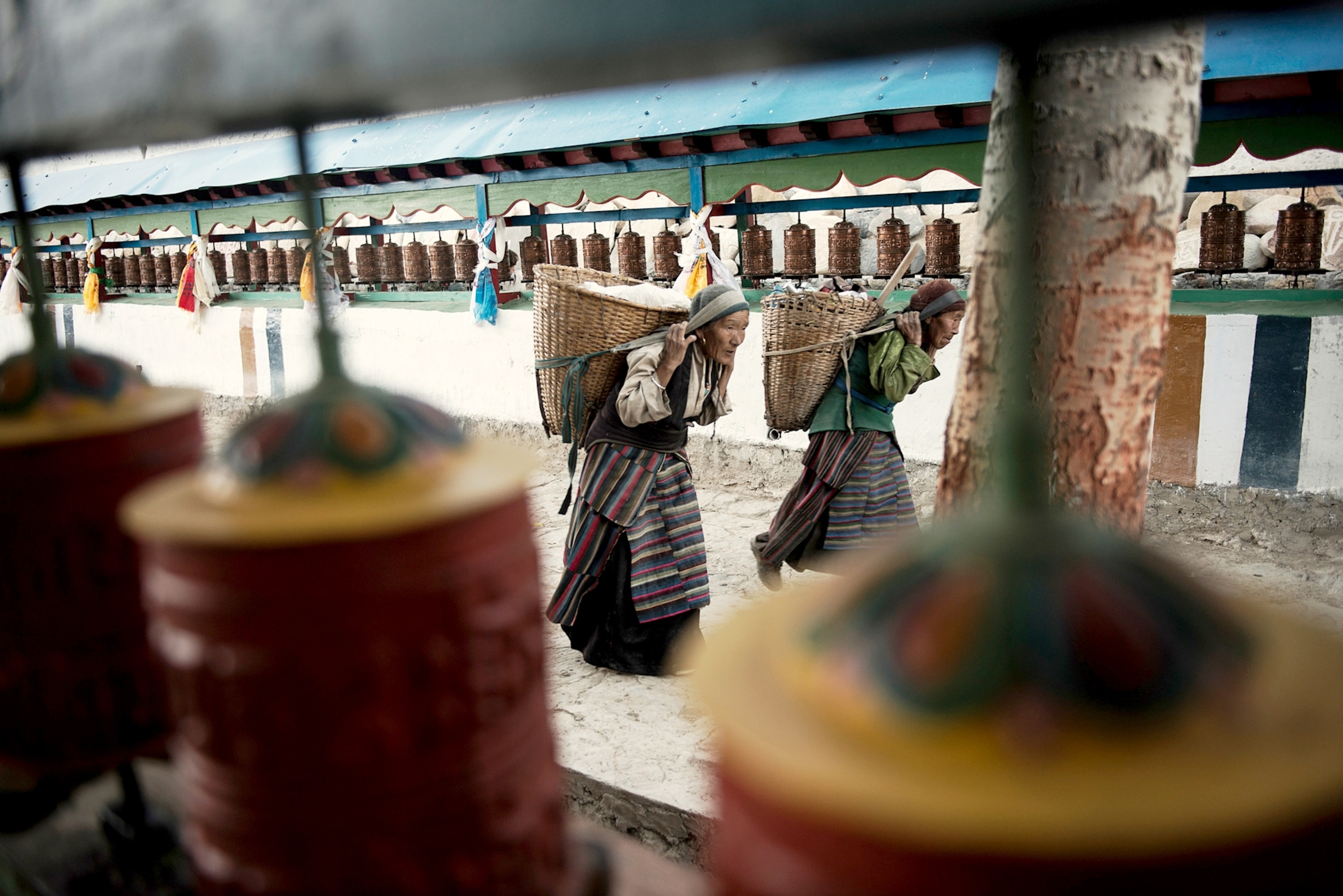
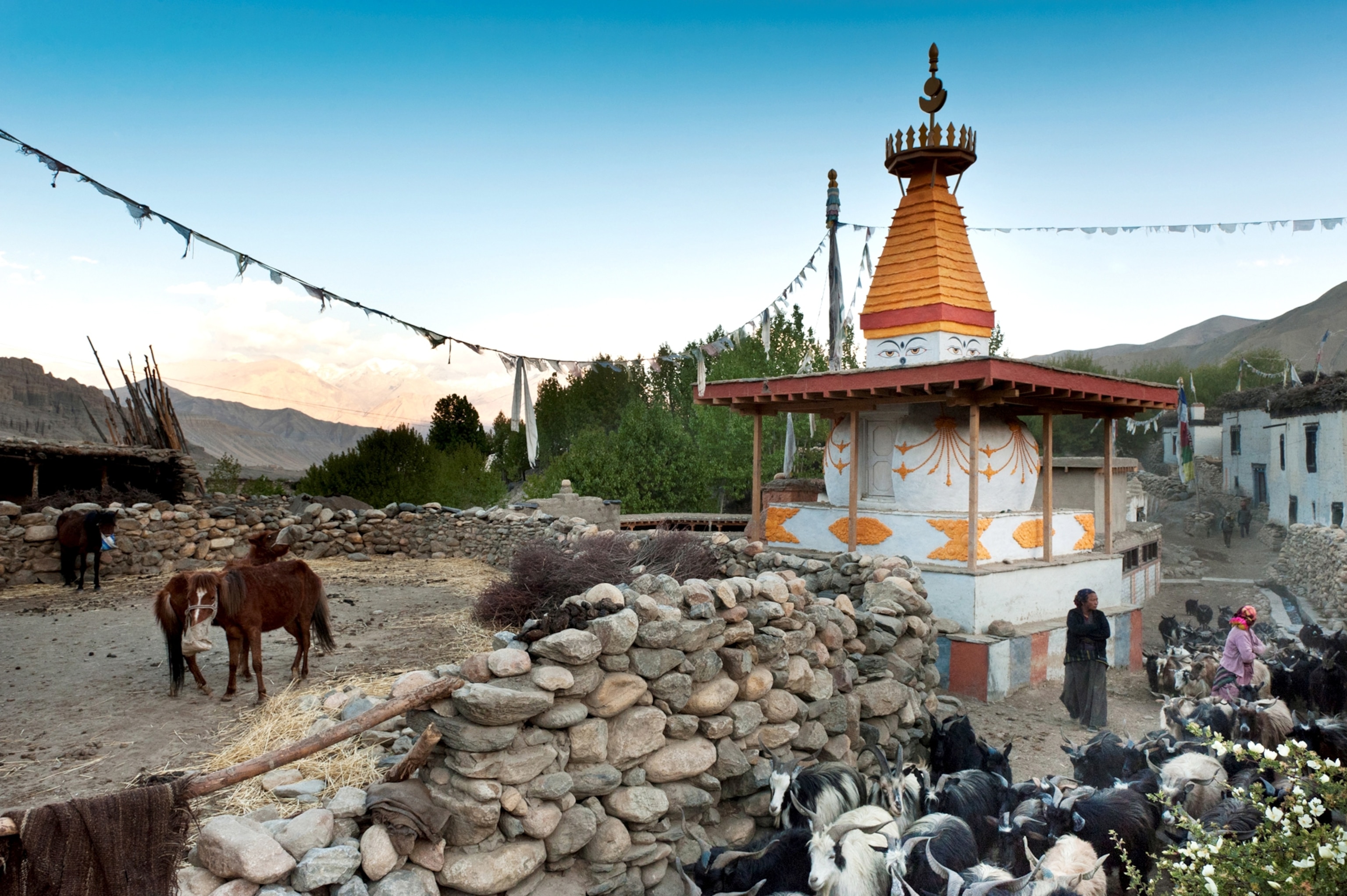
The politics of development
Some Westerners have projected visions of Shangri-La onto Nepal’s mountainous regions, but living so far from basic services has long been arduous for local people. K.P. Kafle, founder of Heart of the Himalaya Treks, grew up in a remote Mustang village and recalled that people there had to walk 15 days each way to get salt. “That time you had to carry, carry, carry,” he said. “As an adventurer who loves Mother Nature, I don’t like the road, let me tell you, but for my relatives in Mustang, this is a golden opportunity. They like that they can get in a vehicle and be in Kathmandu in 12 hours.”
Funded by Nepal’s government, international aid groups, and neighboring countries, primarily China, road building has rapidly accelerated during the past five years. In 1990 the country had fewer than 2,000 miles of federally funded highways; by 2015 it topped 7,000 miles, and in 2017-18 more than 6,700 additional miles of highways and feeder roads were built, according to Nepal’s Ministry of Physical Infrastructure and Transport.
(Related: China’s new road may clear a path for more Everest climbers.)
Nepal’s new constitution, adopted in 2015, directed that remote villages be served by roads, but the vertiginous terrain makes building them difficult. Many roads are hastily dug along riverbanks by poorly trained crews; some are in protected areas such as national parks, said Swarnim Waglé, an economist and former vice chair of Nepal’s National Planning Commission.
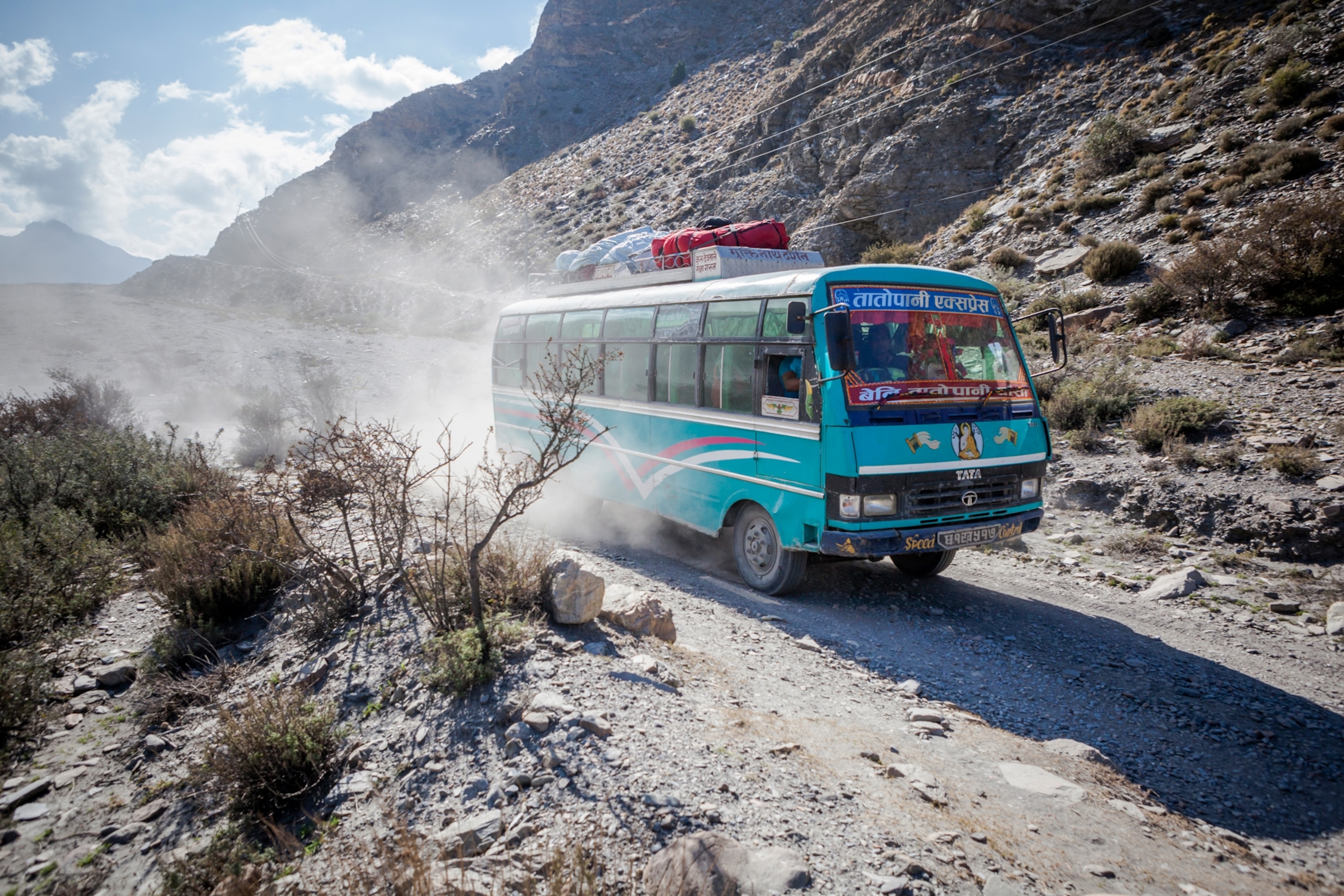
“The environmental cost of bulldozer development, in terms of landslides and lives lost, is immense,” he said. “Roads are washed away in the monsoons, pristine forests are lost, and public money is wasted.”
Yankila Sherpa, a former minister of parliament, grew up in the remote village of Olangchung Gola, in eastern Nepal. “With roads in place, people are no longer dependent on farming to make ends meet. Mobility has allowed people to access jobs in commercial areas.” One example she cited: “Apples grown in Jumla often decayed before the roads came in. Now with the roads, Jumla apples have a high market value in Kathmandu.”
Rural women’s entrepreneurship in local crafts, she noted, has been enhanced with easier access to national and international markets. Yet Sherpa worries about the “depletion of ethnic cultures...with outsiders coming in and taking over local business.” For Sherpa and many others, the question is not whether to build roads—it’s how and where to build them. Due to Nepal’s “fragile economy and challenging geography,” Sherpa would like to see “better, safer roads constructed in a more organized, transparent, and timely manner.”
Ecology and tourism
Nepal’s economy is highly dependent on tourism. Roads in popular trekking regions, such as the Annapurna circuit, can diminish trekkers’ interest in visiting. “Before the roads came in, tourists trekked for 12 days—from Beni to Muktinath and back—in the Annapurna region,” Sherpa said. “Now with the roads, more people are driving straight to Muktinath from Pokhara and driving out the next day. This hardly benefits local hoteliers, restaurant owners, or tourism workers.”
Making roadless trekking a brand in Nepal could attract travelers from countries where road-free areas are hard to access, said Rajeev Goyal, co-director of the environmental group KTK-BELT.
Tshering Lama, who has worked with Himalayan preservation groups for years, says villagers can have both a road and tourism: “It’s not just one or the other.” But he despairs at the way roads are destroying rice terraces, compromising livelihoods, and obliterating people’s homes. One idea to maintain tourism is to separate roads, where feasible, from traditional trekking routes, keeping them miles apart. Norgay and others are looking at alternate trekking routes in Mustang and elsewhere for next year, when they expect visitors to return post-pandemic.
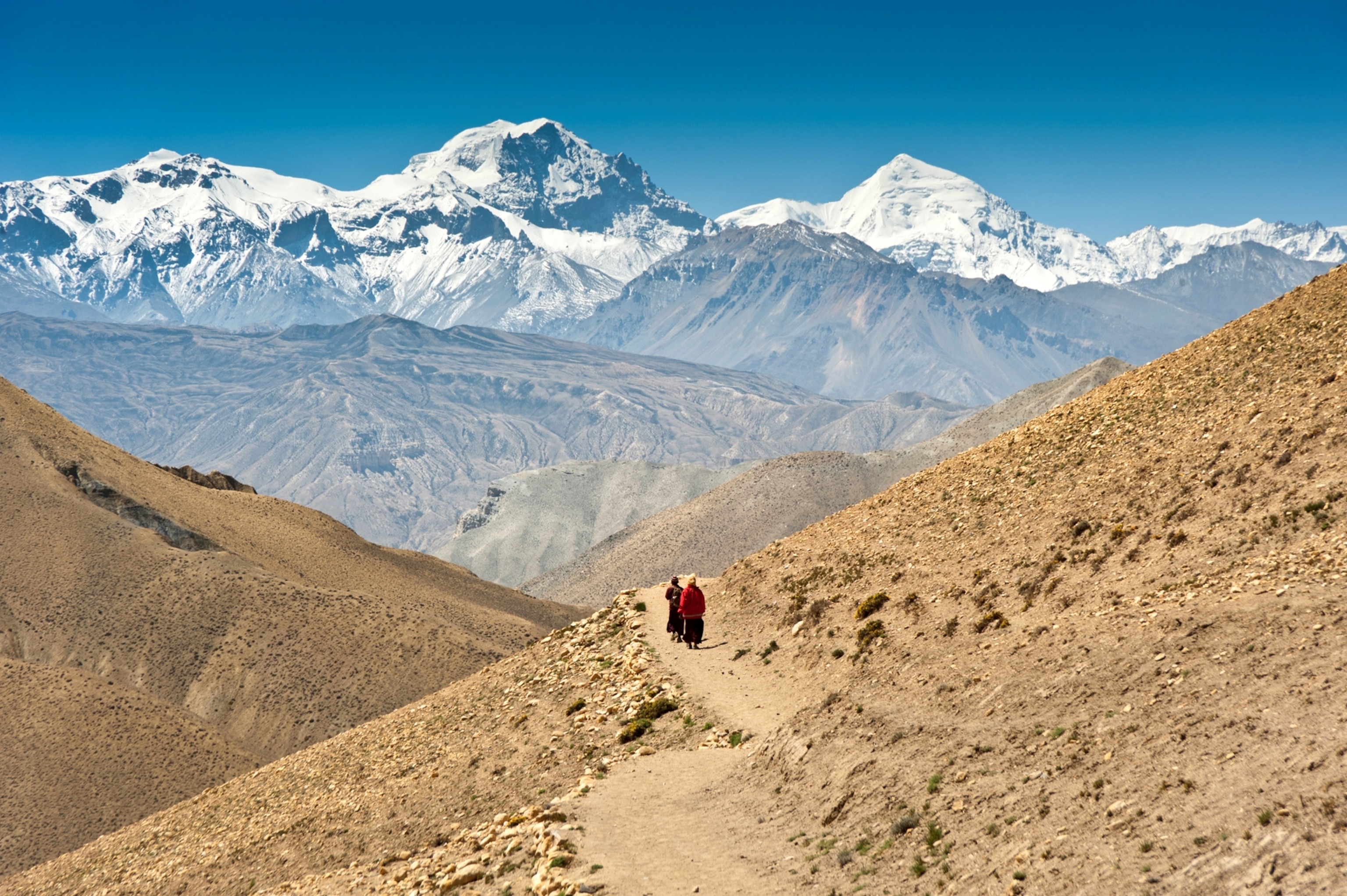
Some areas, local conservationists believe, should be left road-free to attract travelers and the revenue that comes with them. Among them are Lumbasamba, the Upper Arun Valley, and the Everest region where treks to the mountain’s base camp are highly popular, says Karma Bhutia, who served for more than 20 years as the Mountain Institute’s regional livelihood coordinator and helped create Makalu Barun National Park.
(Related: This man searched for the Yeti for 60 years—and found it.)
“We, the local people, are trying to save the lives of pristine forests and the traditional yak caravan system, medicinal plants, snow leopards, and Himalayan black bears. And these places are home to vulnerable indigenous communities,” Bhutia said, noting that road building is often the gateway for logging and hydropower projects.
“There should be a middle path where development can go side-by-side with cultural and environmental considerations. For that,” Lama said with a rueful laugh, “you need a lot of consciousness.”
